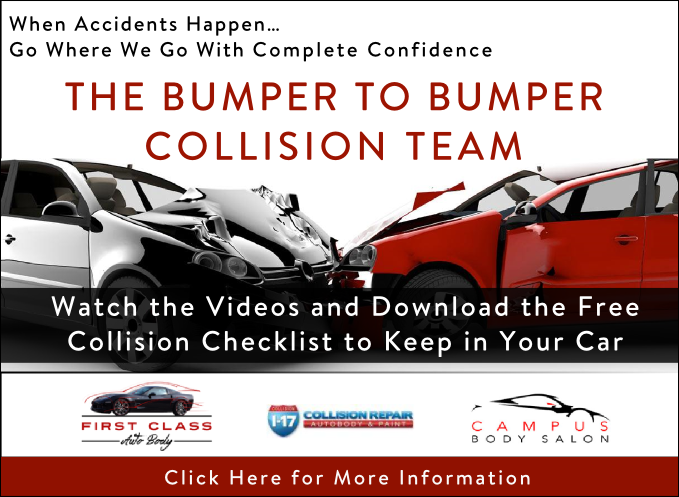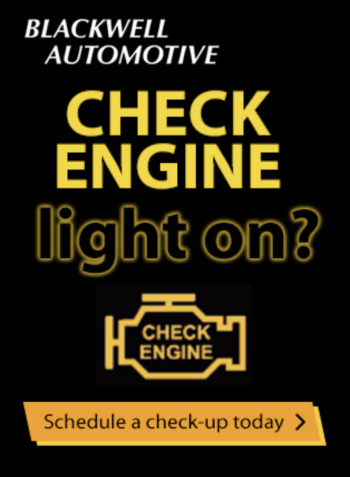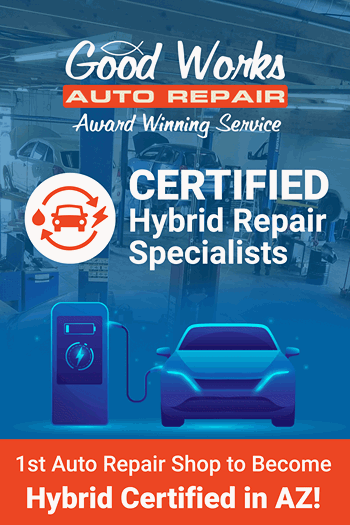

Welcome to Bumper to Bumper Radio!
Drive in anxious and cruise out confident with the best automotive information for your vehicle! Tune in to KTAR News 92.3 every Saturday from 11 a.m. to noon as Matt Allen helps listeners with their car problems. The show call in number is 602-277-5827.
Latest News From Bumper to Bumper Radio

At $2.83, the national gas price average is trending toward lower gas prices that motorists haven’t seen since early May. Today’s national gas price average is one-cent less on the week, four-cents cheaper than last month, but 19-cents more than a year ago.
Motorists took advantage of these stable and lower prices by driving gasoline demand to its highest level ever on record at 9.899 bbl for the week ending August 24, according to the Energy Information Administration. But that spike is not expected to continue.
“With summer in the rearview mirror, demand is expected to significantly drop off in the coming weeks which means motorists can expect to see gas prices steadily decline,” said Jeanette Casselano, AAA spokesperson. “AAA expects the national average to hit $2.70 or less this fall.”
Quick Stats
The nation’s top 10 most expensive markets are: Hawaii($3.78), California ($3.62), Washington ($3.38), Alaska ($3.31), Oregon ($3.26), Idaho ($3.25), Nevada ($3.19), Utah ($3.18), Pennsylvania ($3.05), and Connecticut ($3.04).
The nation’s top 10 largest monthly changes are: Indiana (-16 cents), Kentucky (-12 cents), Illinois (-11 cents), Delaware (-10 cents), Ohio (-10 cents), Idaho (+10 cents), Utah (+10 cents), Alaska (-9 cents), South Dakota (-8 cents) and Michigan (-8 cents).
West Coast
The West Coast remains the nation’s most expensive region for retail gasoline, and most of the states represented in the nation’s top ten most expensive are located west of the Rockies. Hawaii ($3.78) is the nation’s most expensive market, followed by California ($3.62), Washington ($3.38), Alaska ($3.31), Oregon ($3.26), Nevada ($3.19) and Arizona ($2.86). Prices in the region are mostly flat compared to last week, except for a two-cent jump in both California and Oregon.
Last week’s, Energy Information Administration report showed West Coast gasoline supplies dropped by 1.2million bbl, their largest one-week draw in five months. The region’s supplies now sit at 28.9 million bbl, which is still 2.7 million bbl higher than the same week last year.

ATLANTA, Aug. 30, 2018 -- In a digital age, physical experiences are rare and valuable. Consumers can have a hard time getting the touch and feel of a product when everything is online or automated. Porsche is bucking those trends with a large-scale commitment to consumer immersion at its two Porsche Experience Centers (PECs), where anybody can touch rubber to the track instead of just touching a screen. And it's working. Less than three years after the biggest investment by Porsche outside of Germany, the two U.S. Experience Centers have now topped a combined 250,000 visitors who come to drive, shop and dine in a Porsche environment.
The model works as a way to connect with new audiences, a goal for every premium automaker. About 60 percent of PEC visitors do not currently own a Porsche, but after driving the centers' tracks, 30 percent of non-owners say they are very likely to buy one. For others, Porsche becomes more memorable and aspirational once they've driven one. The average visitor is seven years younger than the average Porsche customer. And about one-quarter of visitors are under age 35.
"A quarter of a million guests so far is a testament to the power of experience and to the fascination of Porsche sports cars," said Klaus Zellmer, President and CEO of Porsche Cars North America, Inc. "Porsche stands for superb design and engineering, but also for a superb experience. Getting people behind the wheel in a place where they can really test the performance is the best way to connect them with the Porsche brand."
Porsche's commitment to its Experience Centers comes as the retail landscape is being redefined by younger consumers. A recent Harris Group poll revealed that 72 percent of Millennials would rather invest in experiences than things. Since 1987, spending on experiences and events relative to total U.S. consumer spending increased 70 percent, according to the same study.
What is a Porsche Experience Center? The destinations serve as track-based brand embassies where visitors can indulge in everything Porsche. They are different than drive experiences offered by other carmakers because they were purpose-designed and built to be immersive retail experiences for the public. Experience Centers do not sell cars, but they work closely with the 190 independent U.S. Porsche dealers, for example hosting customer groups sent by dealers.

AUBURN HILLS, Mich., Aug. 28, 2018 - Jeep® Wrangler Moab Edition builds on Sahara model, adding special content to the exterior and interior, including aggressive 32-inch mud-terrain tires
The Jeep® brand is introducing the 2018 Jeep Wrangler Moab Edition. The first limited-edition model based on the all-new Jeep Wrangler, the Wrangler Moab Edition honors the long and storied history the brand shares with the annual Easter Jeep Safari event in Moab, Utah, and the unique role it plays in offering valuable customer insight.
Jeep Wrangler Moab Edition
The Jeep Wrangler Moab Edition is based on the Wrangler Sahara model and features Rubicon hood and steel bumpers with removable end caps, aggressive 32-inch mud-terrain tires, LED headlights and tail lights, a Moab decal on the hood and 17-inch Rubicon wheels painted in Low-Gloss Black. The headlight surrounds, grille throats and tow hooks are also painted Low-Gloss Black. Wrangler Rubicon rock rails are standard on the Wrangler Moab Edition, but Sahara side steps are available at no additional charge. A body-color hard top is standard, but the Dual Top Group or Sky One-Touch power top are also available.
Wrangler Moab Edition is available in nine colors: Granite Crystal, Billet Silver, Punk'n Metallic, Mojito!, Black, Bright White, Sting Gray, Ocean Blue Metallic and Firecracker Red.
Inside, Wrangler Moab Edition features the Leather Interior Group, which includes leather-trimmed seats and a leather-wrapped dashboard with contrast stitching, and Safety Group, which includes Blind-spot Monitoring and Rear Cross Path detection, ParkSense park assist with reverse stop and ParkView rear backup camera with dynamic grid lines. Other standard features include Selec-Trac full-time two-speed transfer case, Passive Keyless Entry, Trac-Lok limited-slip rear differential, 8.4-inch Uconnect touchscreen with navigation, a nine-speaker premium Alpine sound system and all-weather slush mats.

Motorists across the country continue to see their local pump prices dropping. On the week, state gas price averages declined as much as four cents while the national gas price average held steady at $2.84, which is two-cents cheaper than a month ago, but 48-cents more than a year ago.
“With Labor Day approaching, motorists could see a small swing towards higher gas prices, but any jump should not last past the holiday weekend,” said Jeanette Casselano, AAA spokesperson.
Last year’s Labor Day weekend saw gas prices spike, but that was due to Hurricane Harvey. As it battered the Southeast, it shut down refineries and pipelines driving gas prices toward their highest point of 2017 ($2.67). Despite no hurricane activity this Labor Day weekend, gas prices will be at their highest point for the holiday since 2014.
Quick Stats
The nation’s top 10 most expensive markets are: Hawaii($3.76), California ($3.60), Washington ($3.37), Alaska ($3.32), Idaho ($3.26), Oregon ($3.25), Utah ($3.20), Nevada ($3.19), Connecticut ($3.04) and Pennsylvania ($3.03).
The nation’s top 10 largest weekly changes are: Ohio (+10 cents), Michigan (+5 cents), Wyoming (+4 cents), Florida (-4 cents), Colorado (+3 cents), South Dakota (-3 cents), Georgia (-3 cents), Kansas (-3 cents), Missouri (-3 cents) and Utah (+2 cents).
West Coast
Pump prices in the West Coast region are among the highest in the country: Hawaii ($3.76), California ($3.60), Washington ($3.37), Alaska ($3.32), Oregon ($3.25), Nevada ($3.19) and Arizona ($2.86). When compared to last week, most pump prices in the region are flat. Alaska and Arizona had the biggest changes, dropping by a penny each.
According to the Energy Information Administration’s (EIA) petroleum status report for the week ending on August 10, inventories of gasoline in the region decreased by 200,000 bbl. They now sit at 30.1 million bbl, which is four million bbl higher than total levels at this time last year. Higher supplies will help offset potential price spikes in the region if demand increases in the run-up to Labor Day.
Additionally, the impact of Hurricane Lane on Hawaii’s gasoline refining and delivery systems has been minimal. Par Pacific, Hawaii’s largest refinery, closed as a safety precaution over the weekend, but it has since restarted.

ORLANDO, Fla. (Aug. 21, 2018) – Ride-hailing services are a popular and convenient transportation option, but a new AAA analysis shows they are not a cost-effective replacement for vehicle ownership. According to the AAA Foundation for Traffic Safety, the average driver in an urban area – the only setting in which using these services are a practical full-time transportation option – drives 10,841 miles per year. While urban drivers travel fewer miles than those living in smaller towns or rural areas, relying on ride-hailing services as a primary mode of transportation would cost $20,118 annually. This equates to more than twice the cost of owning a personal vehicle, even when factoring in the expense of fuel, insurance, parking and the vehicle itself.
“Whether you own a vehicle or not, ride-hailing services are a convenient transportation option,” said John Nielsen, managing director, Automotive Engineering and Repair. “However, with the average American city-dweller driving nearly 11,000 miles per year, a personal vehicle is still the more cost-effective choice.”
For the study, AAA analyzed the costs of ride-hailing services (including the use of an occasional rental car) in 20 major urban areas. Based on the average number of miles traveled by city-dwellers, annual ride-hailing costs are as follows:
Bumper Audio Clip of the Week

|
Bumper to Bumper host Matt Allen's shoutout to Shady Rays Sunglasses! Use Promo Code: BUMPER for 30% OFF! |



















